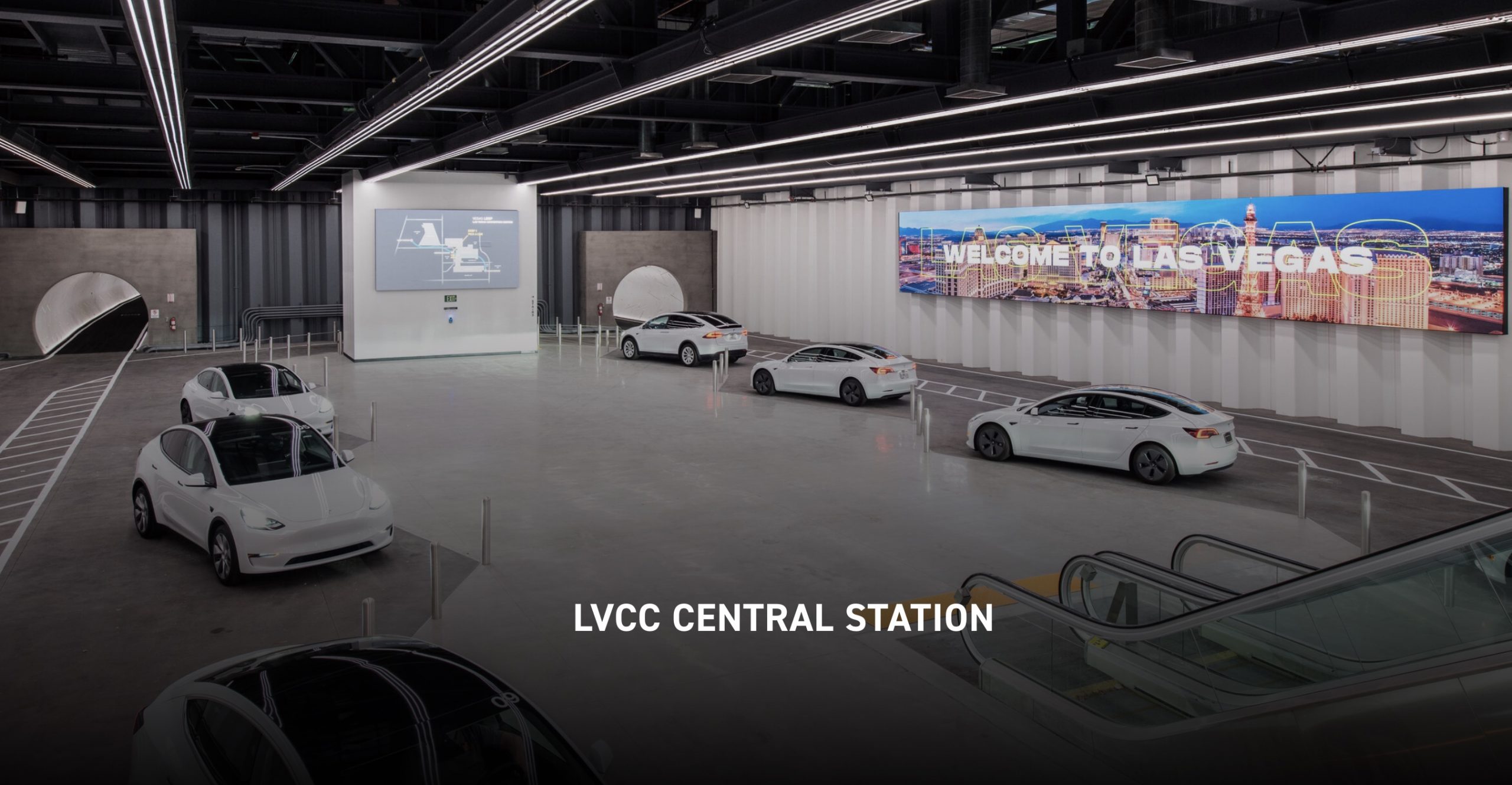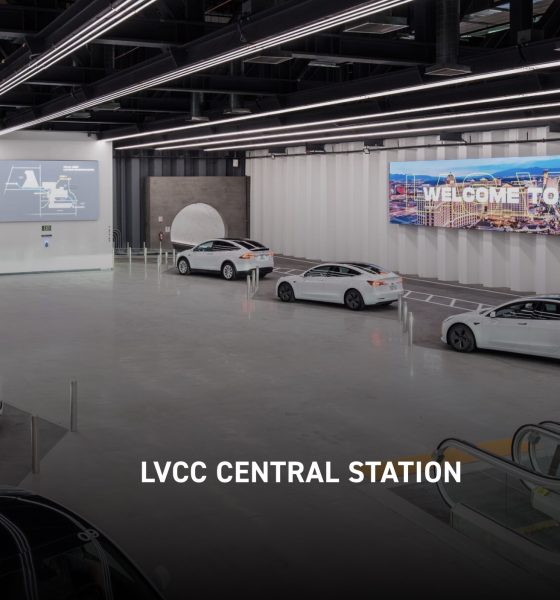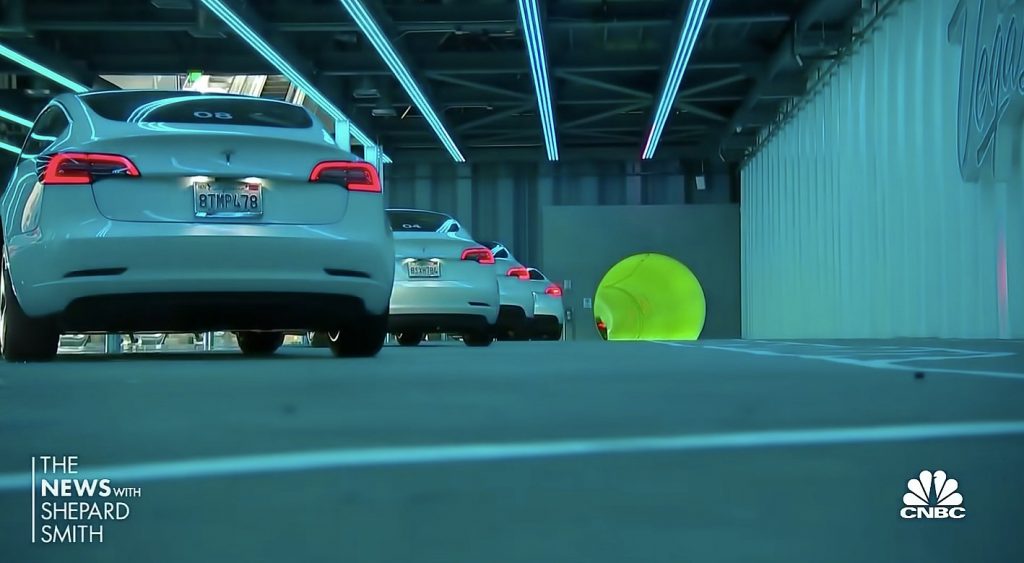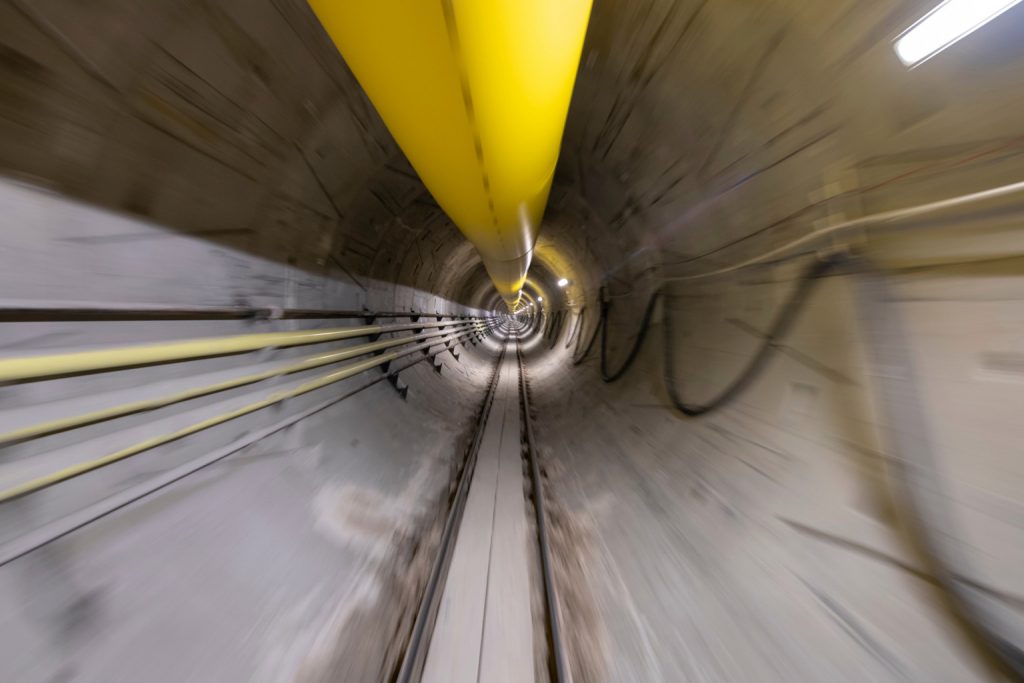

News
Elon Musk’s Boring Company introduces updated lineup of tunneling products
Elon Musk’s Boring Company has announced its updated lineup of tunneling products and services. With its expanded list of offerings, The Boring Company could extend its reach beyond mass transportation.
As could be seen in the tunneling startup’s official website, The Boring Company now offers a total of five different tunnels for its clients. The first of these is the Loop, which has been built in the Las Vegas Convention Center. The Boring Company’s Loop tunnels are built for mass transportation, and they are capable of fitting vehicles like the Tesla Model 3 and Model X.

Clients that would opt-in for the Loop would receive a tunnel that is 12 feet in diameter and complete with a drive surface, LED lighting, emergency backup lighting, CCTV video system, secure wireless communication, blue light stations, passenger cell phone service, fire safety system, and ventilation systems. Project engineering, permits, and environmental reviews are included with every Loop project.
Apart from the Loop, The Boring Company also offers Utility tunnels, which could support access to multiple utilities without disrupting the surface. This was something that Elon Musk initially mentioned back in 2018 during a fireside chat in Los Angeles. During his talk, Musk noted that The Boring Company is open to digging tunnels for water transport, electrical, and even sewage. “We’re not going to turn our noses up at sewage tunnels. We’re happy to do that too,” Musk said.
The Boring Company’s Utility tunnels are 12 feet in diameter and are equipped with a flat maintenance surface, LED lighting, and a CCTV video system. Utility tunnel contracts also include project engineering, environmental review, and permitting.
The tunneling startup’s updated product page includes Freight tunnels as well, which can fit a standard shipping container. Using Boring Company tunnels for logistics purposes has been mentioned by Elon Musk in the past when he noted that Tesla is looking to build an underground system that connects the Fremont Factory to the EV maker’s seat factory on Page Avenue. According to Musk, such a system could improve Tesla’s vehicle production output.

Freight tunnels are 12 feet in diameter and are equipped with a flat maintenance surface, LED lighting, and a CCTV video setup. Project engineering, environmental review, and permitting are also included with every Freight tunnel contract.
The Boring Company’s tunnels could also be used for pedestrian use. As per the tunneling startup’s website, The Boring Company’s Pedestrian tunnels provide a safe way for people and cyclists to avoid road traffic on the surface. Lengths for Pedestrian tunnels range from 100 feet to 2,500 feet, and each comes with a flat walk/ride surface, LED lighting, emergency backup lighting, CCTV video system, cell phone service, fire safety system, and a ventilation system. Project engineering, environmental review, and permitting, are also included with every Pedestrian tunnel contract.
Lastly, the tunneling startup is also offering Bare tunnels for clients. As the name suggests, Bare tunnels are a blank slate for any project that clients would like to pursue. Bare tunnels are 12 feet in diameter and include project engineering, environmental review, and permitting.
The Teslarati team would appreciate hearing from you. If you have any tips, email us at tips@teslarati.com or reach out to me at maria@teslarati.com.

News
Tesla FSD fleet is nearing 7 billion total miles, including 2.5 billion city miles
As can be seen on Tesla’s official FSD webpage, vehicles equipped with the system have now navigated over 6.99 billion miles.

Tesla’s Full Self-Driving (Supervised) fleet is closing in on almost 7 billion total miles driven, as per data posted by the company on its official FSD webpage.
These figures hint at the massive scale of data fueling Tesla’s rapid FSD improvements, which have been quite notable as of late.
FSD mileage milestones
As can be seen on Tesla’s official FSD webpage, vehicles equipped with the system have now navigated over 6.99 billion miles. Tesla owner and avid FSD tester Whole Mars Catalog also shared a screenshot indicating that from the nearly 7 billion miles traveled by the FSD fleet, more than 2.5 billion miles were driven inside cities.
City miles are particularly valuable for complex urban scenarios like unprotected turns, pedestrian interactions, and traffic lights. This is also the difference-maker for FSD, as only complex solutions, such as Waymo’s self-driving taxis, operate similarly on inner-city streets. And even then, incidents such as the San Francisco blackouts have proven challenging for sensor-rich vehicles like Waymos.
Tesla’s data edge
Tesla has a number of advantages in the autonomous vehicle sector, one of which is the size of its fleet and the number of vehicles training FSD on real-world roads. Tesla’s nearly 7 billion FSD miles then allow the company to roll out updates that make its vehicles behave like they are being driven by experienced drivers, even if they are operating on their own.
So notable are Tesla’s improvements to FSD that NVIDIA Director of Robotics Jim Fan, after experiencing FSD v14, noted that the system is the first AI that passes what he described as a “Physical Turing Test.”
“Despite knowing exactly how robot learning works, I still find it magical watching the steering wheel turn by itself. First it feels surreal, next it becomes routine. Then, like the smartphone, taking it away actively hurts. This is how humanity gets rewired and glued to god-like technologies,” Fan wrote in a post on X.
News
Tesla starts showing how FSD will change lives in Europe
Local officials tested the system on narrow country roads and were impressed by FSD’s smooth, human-like driving, with some calling the service a game-changer for everyday life in areas that are far from urban centers.

Tesla has launched Europe’s first public shuttle service using Full Self-Driving (Supervised) in the rural Eifelkreis Bitburg-Prüm region of Germany, demonstrating how the technology can restore independence and mobility for people who struggle with limited transport options.
Local officials tested the system on narrow country roads and were impressed by FSD’s smooth, human-like driving, with some calling the service a game-changer for everyday life in areas that are far from urban centers.
Officials see real impact on rural residents
Arzfeld Mayor Johannes Kuhl and District Administrator Andreas Kruppert personally tested the Tesla shuttle service. This allowed them to see just how well FSD navigated winding lanes and rural roads confidently. Kruppert said, “Autonomous driving sounds like science fiction to many, but we simply see here that it works totally well in rural regions too.” Kuhl, for his part, also noted that FSD “feels like a very experienced driver.”
The pilot complements the area’s “Citizen Bus” program, which provides on-demand rides for elderly residents who can no longer drive themselves. Tesla Europe shared a video of a demonstration of the service, highlighting how FSD gives people their freedom back, even in places where public transport is not as prevalent.
What the Ministry for Economic Affairs and Transport says
Rhineland-Palatinate’s Minister Daniela Schmitt supported the project, praising the collaboration that made this “first of its kind in Europe” possible. As per the ministry, the rural rollout for the service shows FSD’s potential beyond major cities, and it delivers tangible benefits like grocery runs, doctor visits, and social connections for isolated residents.
“Reliable and flexible mobility is especially vital in rural areas. With the launch of a shuttle service using self-driving vehicles (FSD supervised) by Tesla in the Eifelkreis Bitburg-Prüm, an innovative pilot project is now getting underway that complements local community bus services. It is the first project of its kind in Europe.
“The result is a real gain for rural mobility: greater accessibility, more flexibility and tangible benefits for everyday life. A strong signal for innovation, cooperation and future-oriented mobility beyond urban centers,” the ministry wrote in a LinkedIn post.
News
Tesla China quietly posts Robotaxi-related job listing
Tesla China is currently seeking a Low Voltage Electrical Engineer to work on circuit board design for the company’s autonomous vehicles.

Tesla has posted a new job listing in Shanghai explicitly tied to its Robotaxi program, fueling speculation that the company is preparing to launch its dedicated autonomous ride-hailing service in China.
As noted in the listing, Tesla China is currently seeking a Low Voltage Electrical Engineer to work on circuit board design for the company’s autonomous vehicles.
Robotaxi-specific role
The listing, which was shared on social media platform X by industry watcher @tslaming, suggested that Tesla China is looking to fill the role urgently. The job listing itself specifically mentions that the person hired for the role will be working on the Low Voltage Hardware team, which would design the circuit boards that would serve as the nervous system of the Robotaxi.
Key tasks for the role, as indicated in the job listing, include collaboration with PCB layout, firmware, mechanical, program management, and validation teams, among other responsibilities. The role is based in Shanghai.
China Robotaxi launch
China represents a massive potential market for robotaxis, with its dense urban centers and supportive policies in select cities. Tesla has limited permission to roll out FSD in the country, though despite this, its vehicles have been hailed as among the best in the market when it comes to autonomous features. So far, at least, it appears that China supports Tesla’s FSD and Robotaxi rollout.
This was hinted at in November, when Tesla brought the Cybercab to the 8th China International Import Expo (CIIE) in Shanghai, marking the first time that the autonomous two-seater was brought to the Asia-Pacific region. The vehicle, despite not having a release date in China, received a significant amount of interest among the event’s attendees.








